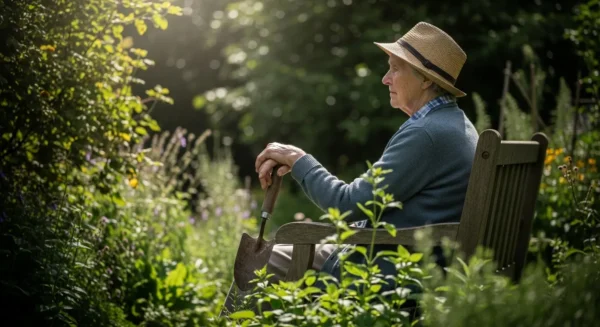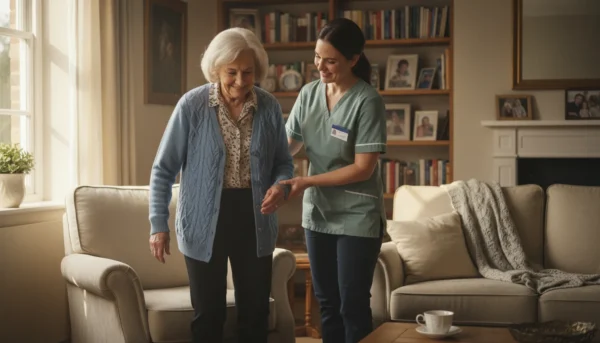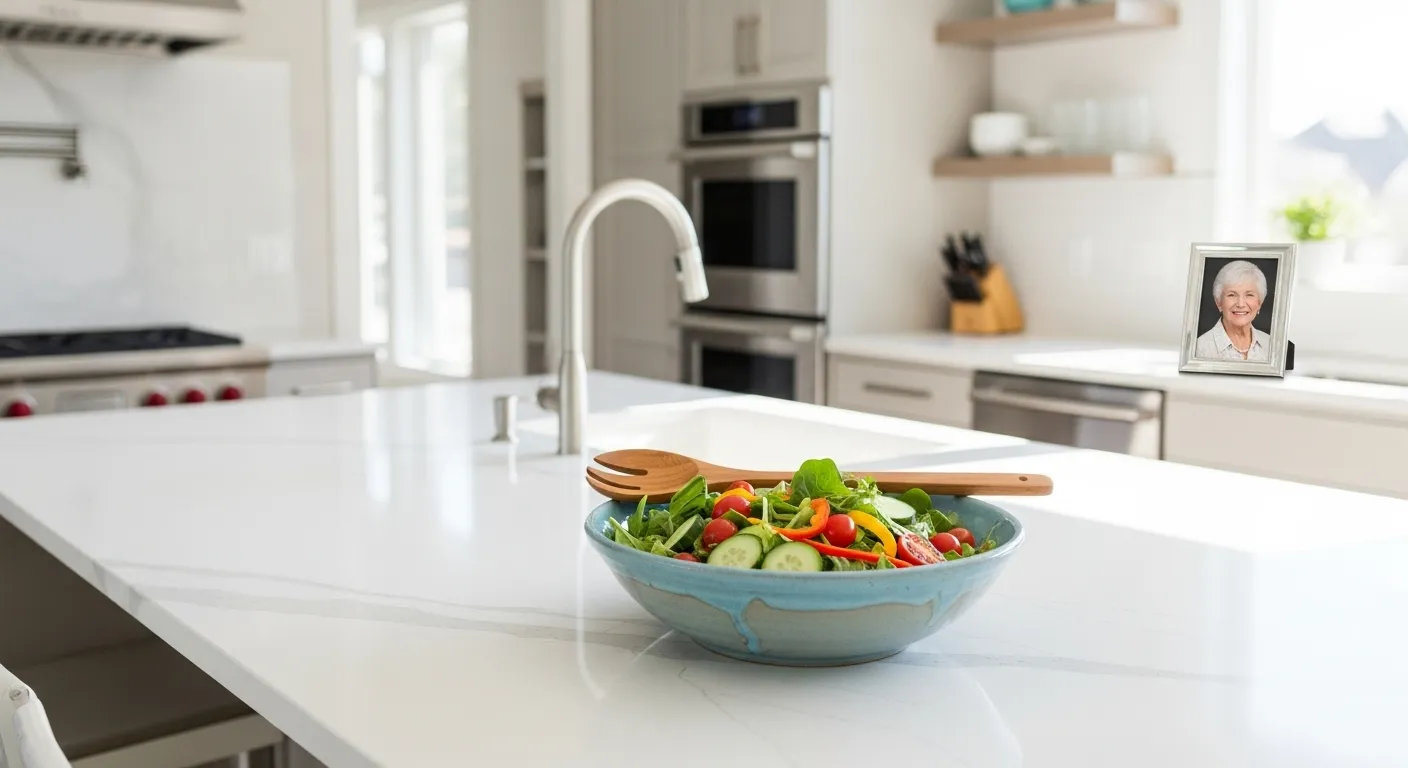
Hello, and welcome. Taking a proactive role in your health is one of the most empowering things you can do, and focusing on your bone strength is a wonderful and wise investment in your future. As we journey into our 60s, 70s, and beyond, our bodies have different needs. Our bones, the very framework that supports our mobility and independence, deserve special attention.
You might think of bones as solid and unchanging, but they are living tissues that are constantly breaking down and rebuilding. Think of your bone density as a “bone bank.” In our younger years, we make more “deposits” than “withdrawals,” building strong bones. As we age, this process can reverse, and we may start losing bone mass more quickly. This can lead to conditions like osteoporosis, making bones more fragile and susceptible to fractures from a minor fall or even a bump.
The good news is that you have a powerful tool right in your kitchen. The foods you eat play a crucial role in providing the essential building blocks your bones need to stay strong and resilient. A nutrient-rich diet can help slow bone loss and significantly reduce your risk of fractures, helping you stay active, safe, and confident.
This guide is designed to give you clear, practical, and supportive advice on what to eat for better bone health. Let’s explore the key nutrients and foods that can help you build and maintain a strong foundation for a vibrant life.
A friendly reminder: This information is for educational purposes. It’s always best to consult with your doctor or a registered dietitian before making significant changes to your diet, especially if you have existing health conditions or are taking medications.
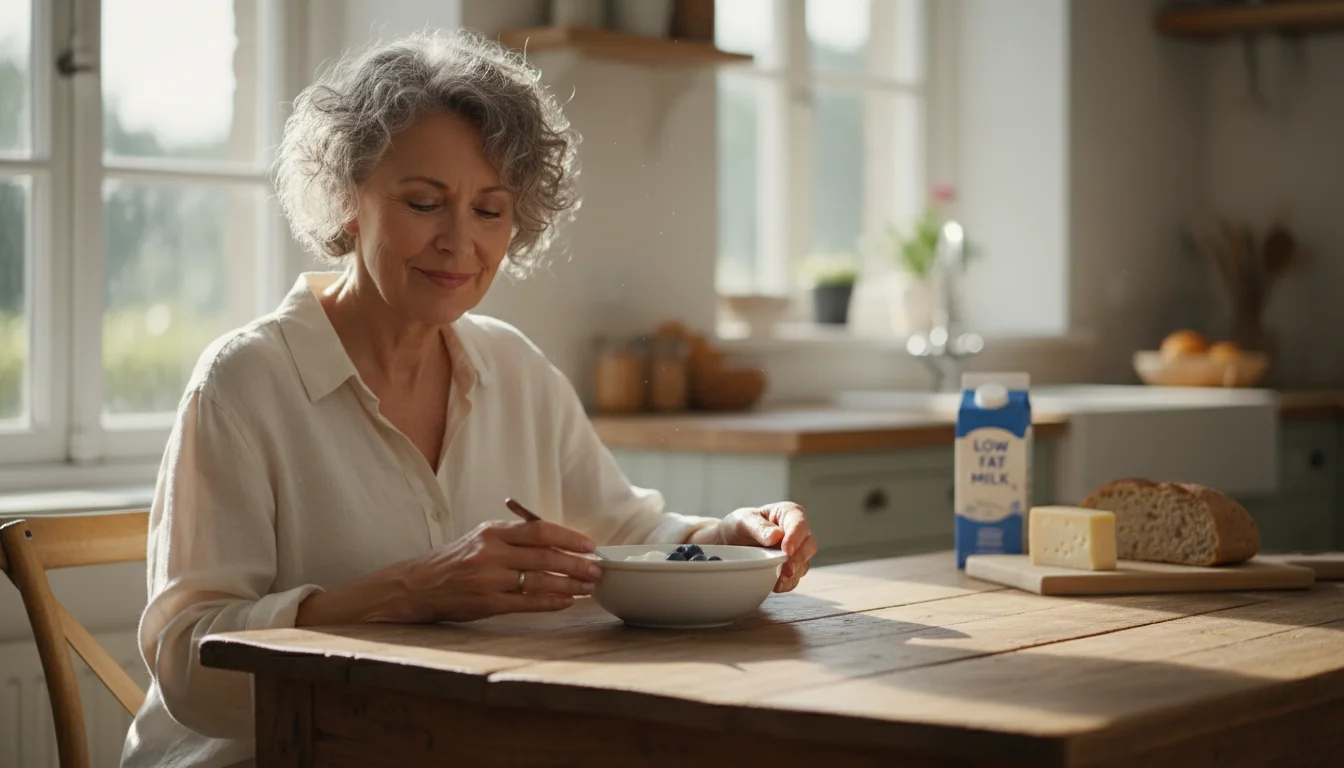
Tip #1: Prioritize Calcium, Your Bones’ Best Friend
The ‘Why’: Calcium is the primary mineral that makes up your bones and teeth, giving them their strength and structure. If you don’t get enough calcium from your diet, your body will take it from your bones to use for other vital functions, like helping your heart beat and your muscles contract. Over time, these “withdrawals” from your bone bank can leave your bones weaker. A consistent, calcium-rich diet is essential for senior bone health because it helps replenish what your body uses every day.
The ‘How’: The goal for most adults over 50 is around 1,200 mg of calcium per day. This might sound like a lot, but you can reach it with a few smart choices.
-
Dairy Power: Low-fat or fat-free milk, yogurt, and cheese are excellent sources. A single cup of plain yogurt can provide nearly a third of your daily needs. Try adding a splash of milk to your morning oatmeal or enjoying a slice of cheese with an apple for a snack.
Fortified Foods: Many foods are now fortified with calcium. Look for fortified orange juice, cereals, breads, and plant-based milks like almond, soy, or oat milk. Check the nutrition label to see how much calcium is in a serving.
From the Sea: Canned sardines and salmon are fantastic choices, but here’s the secret: you need to eat the soft, edible bones! They are packed with calcium. Mash them up on a piece of whole-wheat toast for a simple, nutritious lunch.
Leafy Greens: Dark green vegetables like collard greens, kale, and broccoli are good sources. Try steaming some broccoli as a side for dinner or adding a handful of kale to your soup.

Tip #2: Embrace Vitamin D, Calcium’s Essential Partner
The ‘Why’: If calcium is the brick, Vitamin D is the mortar. Your body cannot effectively absorb the calcium you eat without enough Vitamin D. It acts like a key, unlocking the door that allows calcium to pass from your intestines into your bloodstream and then on to your bones. As we age, our skin becomes less efficient at producing Vitamin D from sunlight, and we may spend more time indoors, making it a critical nutrient for seniors to focus on.
The ‘How’: Getting enough Vitamin D from food alone can be challenging, but it’s important to include rich sources in your diet. Many seniors need a supplement, so this is a crucial topic to discuss with your doctor.
-
Fatty Fish: Salmon, mackerel, and tuna are some of the best natural sources of Vitamin D. A small fillet of salmon a couple of times a week can give your levels a significant boost.
Fortified Milk and Juice: Just like with calcium, many dairy products, plant milks, and orange juices are fortified with Vitamin D. It’s a simple way to get both key nutrients at once.
Egg Yolks: Don’t skip the yolk! That’s where the Vitamin D is stored. An egg or two for breakfast is a great way to start your day.
Safe Sun Exposure: A small amount of sun can help your body produce Vitamin D. For many people, just 10-15 minutes of sun on the arms and legs a few times a week (without sunscreen) can help. However, skin cancer is a real risk, so please talk to your doctor or dermatologist about what is safe for you.
Consult Your Doctor: Because it’s hard to get enough Vitamin D, ask your doctor to check your blood levels. They can recommend a specific supplement dosage that is safe and effective for you.
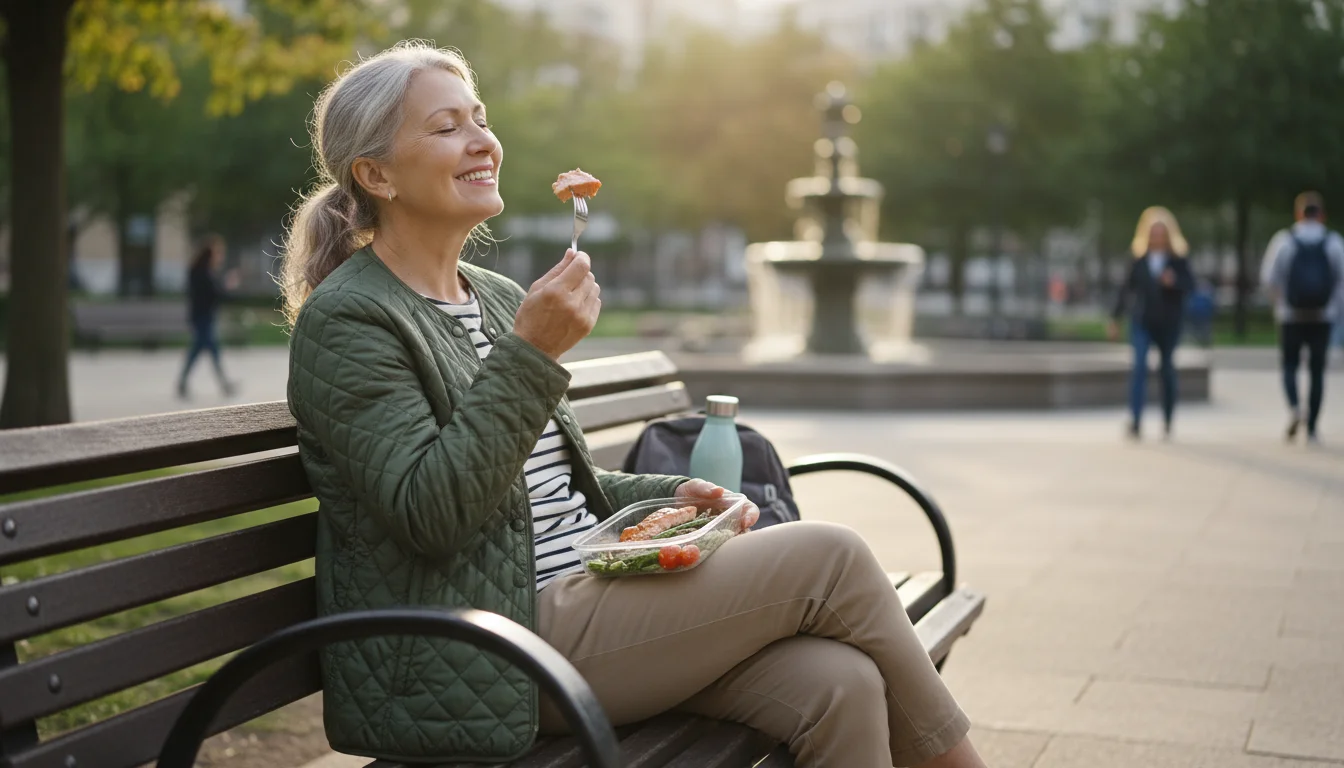
Tip #3: Power Up with Plenty of Protein
The ‘Why’: We often associate protein with muscle, but it’s just as vital for our bones. About 50% of our bone volume is made of protein, which creates a soft framework, or “matrix,” that calcium and other minerals attach to. Without enough protein, this framework weakens. Furthermore, strong muscles are essential for protecting your bones. Good muscle mass improves your balance and coordination, which is your best defense against falls that could lead to a fracture.
The ‘How’: Aim to include a source of protein with each meal to spread your intake throughout the day. This helps your body build and maintain both muscle and bone tissue more effectively.
-
Lean Meats: Skinless chicken or turkey breast and lean cuts of pork are excellent choices.
Fish: In addition to providing Vitamin D, fish is a wonderful source of lean protein.
Plant-Based Power: Beans, lentils, chickpeas, and tofu are fantastic, fiber-rich protein sources. Try adding a scoop of chickpeas to your salad or making a hearty lentil soup.
Eggs and Dairy: Greek yogurt is especially high in protein. Cottage cheese and eggs are also easy and versatile options.
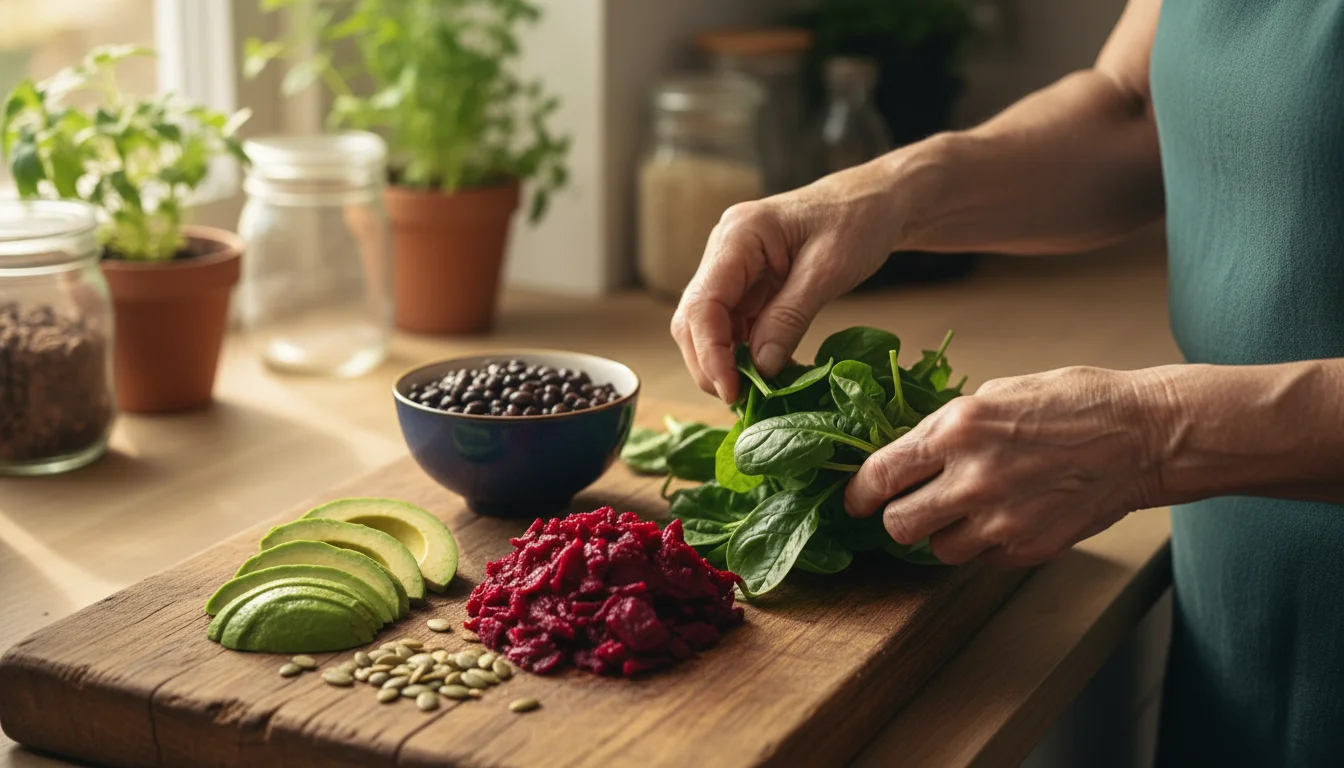
Tip #4: Fill Your Plate with Magnesium and Potassium
The ‘Why’: Think of magnesium and potassium as the essential supporting cast for bone health. Magnesium plays a role in converting Vitamin D into its active form, which, as we know, is necessary for calcium absorption. It also helps stimulate a hormone that draws calcium from the blood into the bones. Potassium helps to neutralize acids in your body that can leach calcium from your bones, helping to keep that precious mineral locked in where it belongs.
The ‘How’: The best way to get these minerals is by eating a wide variety of whole, plant-based foods. Aim to “eat the rainbow” to ensure you’re getting a broad spectrum of nutrients.
-
Magnesium-Rich Foods: Reach for almonds, cashews, spinach, black beans, edamame, avocados, and whole grains like oatmeal and whole-wheat bread. A small handful of almonds makes a perfect bone-strengthening snack.
Potassium-Rich Foods: Many people think only of bananas, but sweet potatoes, tomatoes, white beans, spinach, and yogurt are even better sources. A baked sweet potato with your dinner is a delicious way to boost your potassium intake.
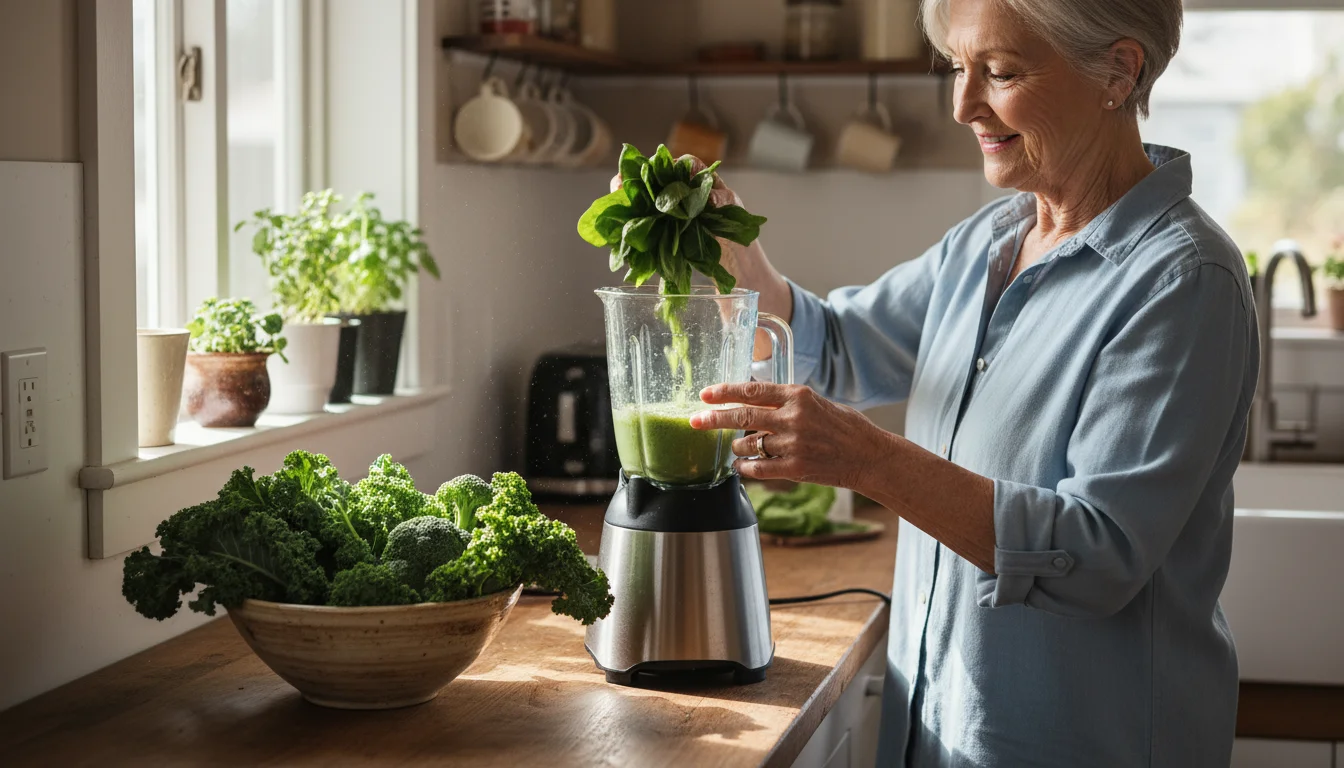
Tip #5: Don’t Forget Vitamin K for Bone Building
The ‘Why’: Vitamin K is another crucial helper in the bone-building process. It helps activate several proteins that are responsible for bone mineralization. In simple terms, Vitamin K helps ensure that the calcium you eat ends up in your bones and not elsewhere in your body. Studies have shown that adequate Vitamin K intake is linked to higher bone density and a lower risk of fractures.
The ‘How’: Leafy green vegetables are the undisputed champions of Vitamin K. It’s easy to work them into your daily routine.
-
Top Sources: Kale, collard greens, spinach, turnip greens, and Brussels sprouts are packed with Vitamin K. Broccoli is also a great source.
Simple Additions: Add a large handful of fresh spinach into a smoothie—you won’t even taste it! Sauté kale with a little garlic and olive oil as a side dish, or roast some Brussels sprouts until they are crispy and delicious.
Important Safety Note: If you take a blood-thinning medication like Warfarin (Coumadin), you must speak with your doctor before significantly changing your intake of Vitamin K, as it can interfere with your medication. Your doctor can help you find a safe and consistent intake level.
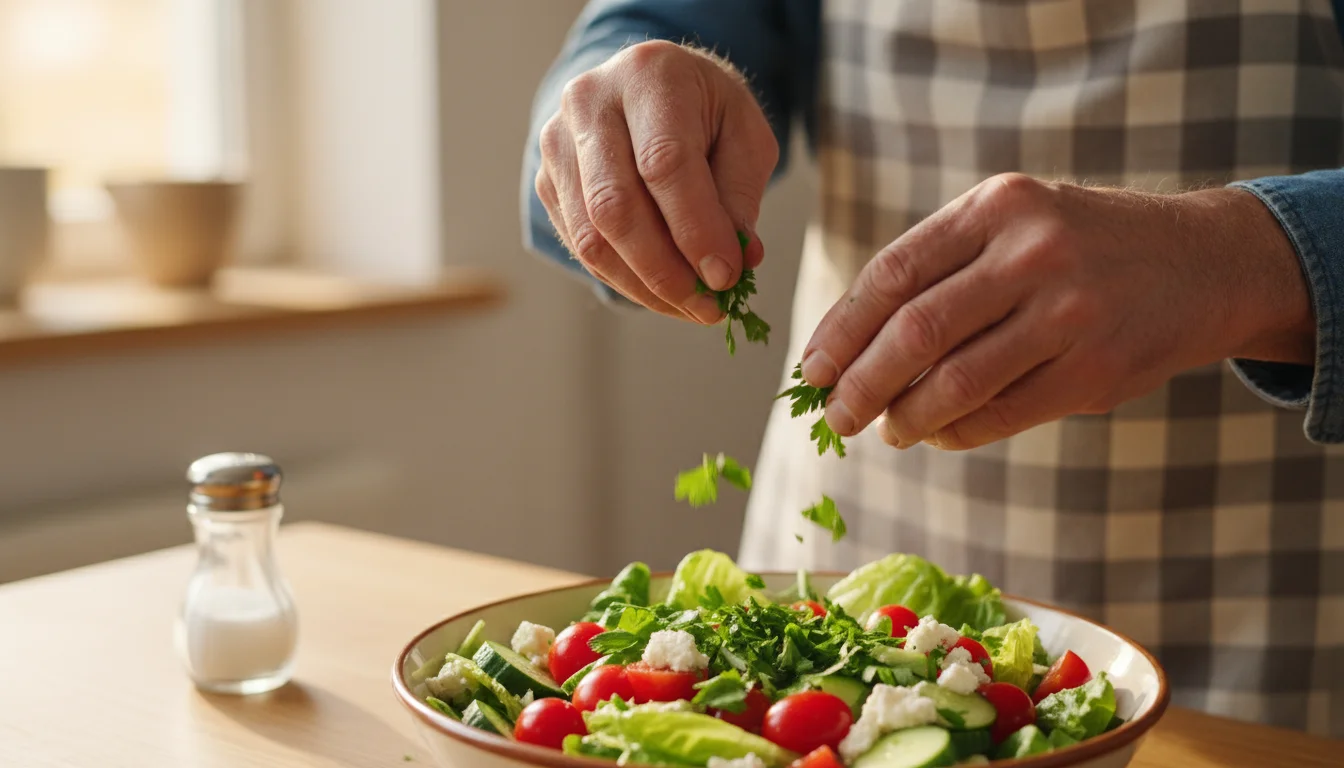
Tip #6: Be Mindful of “Bone Robbers” in Your Diet
The ‘Why’: Just as some foods build up your bones, others can have the opposite effect if consumed in excess. Being mindful of these “bone robbers” is an important part of a complete senior bone health strategy. High levels of sodium (salt) can cause your body to excrete more calcium through urine. Excessive alcohol can interfere with your body’s ability to absorb calcium and Vitamin D. Too much caffeine can also slightly reduce calcium absorption.
The ‘How’: The key here is moderation, not complete elimination. A few simple swaps can make a big difference.
-
Reduce Sodium: Much of our salt intake comes from processed, packaged, and restaurant foods. Try to cook more fresh meals at home. Instead of reaching for the salt shaker, flavor your food with herbs, spices, garlic, and lemon juice.
Moderate Alcohol: Health guidelines recommend limiting alcohol intake. For older adults, this is often defined as no more than one drink per day for women and men.
Balance Your Caffeine: Enjoying a cup or two of coffee or tea per day is generally fine, especially if your calcium intake is adequate. If you drink more, consider swapping one cup for a decaffeinated version or a soothing herbal tea.
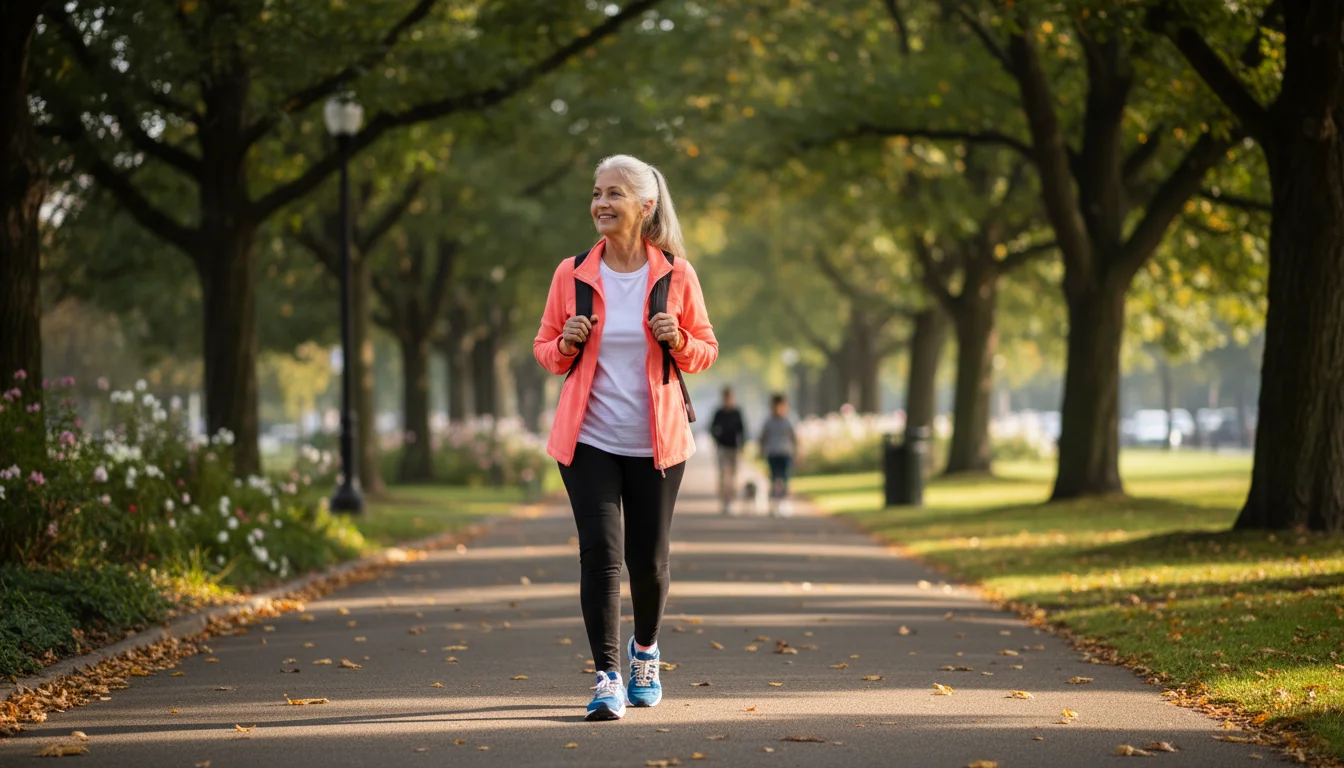
Tip #7: Pair Your Diet with Gentle, Weight-Bearing Movement
The ‘Why’: Nutrition provides the building blocks for strong bones, but exercise provides the signal to build. When you perform weight-bearing activities, you put a safe and gentle stress on your bones. This stress stimulates the bone-building cells (osteoblasts) to get to work, making your bones denser and stronger. This combination of a bone-strength diet and gentle exercise is the most effective strategy for maintaining your skeletal health.
The ‘How’: The best exercise is one you enjoy and can do safely and consistently. Always check with your doctor or a physical therapist before starting a new exercise routine.
-
Walking: A brisk walk is one of the easiest and most accessible weight-bearing exercises. Start with 10-15 minutes a day and gradually increase your time.
Dancing: Put on your favorite music and move! Dancing is wonderful for your bones, balance, and your spirit.
Climbing Stairs: If it’s safe for you, choosing the stairs over the elevator is a simple way to incorporate weight-bearing activity into your day.
Tai Chi: This gentle martial art is excellent for improving balance and coordination, which directly helps in preventing falls.
Building and maintaining strong bones is a journey, not a destination. By focusing on a colorful diet rich in calcium, Vitamin D, protein, and other key minerals, you are taking a powerful step toward preserving your health, mobility, and independence for years to come. Be patient with yourself, celebrate the small changes you make, and remember to always partner with your healthcare team. You have the power to nourish your body from the inside out.
For expert guidance on senior health and finance, visit Administration for Community Living (ACL), Eldercare Locator, AARP and Alzheimer’s Association.
|
Fact-Checked Content
Our editorial team reviews all content for accuracy and updates it regularly. Learn about our editorial process →
|




